Data collection using 3D scans
A major focus of the Greifenberg Institute's work is the metrological capture and documentation of research objects and the development of practical and efficient methods for this complex and demanding task.
In recent years, the technology of digital 3D scanning of objects has evolved rapidly. After many years of dismissing the available scanning methods as too impractical (the point cloud grids generated by the scanner had to be manually converted into surfaces and lines), there are now high-performance, partly AI-supported 3D scanners that automate the conversion of point clouds into orthogonal grids and subsequently into surfaces. Photographic captures of the objects can even capture the surface colors and display them on the digital model, allowing for the creation of highly realistic virtual 3D models with relatively much less effort.
One of the 3D scanners commonly used in archaeology is the Artec LEO, which appeared promising in our research. Together with archaeologist and IT specialist Dr. Susanne Bosche (DiAuViS), we initiated a project to explore the possibilities and limitations of this device for our applications.
(AI-Translation)
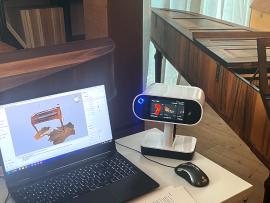
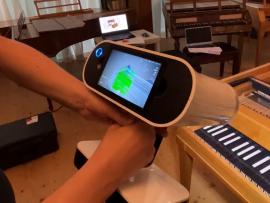
Project goals:
- Accuracy of measurement data
- Possibilities for measurements in the 3D model
- Combination with our FARO measuring arm
- Temporal efficiency
(AI-Translation)
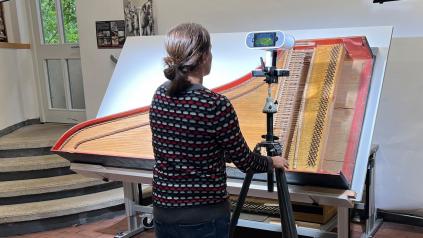
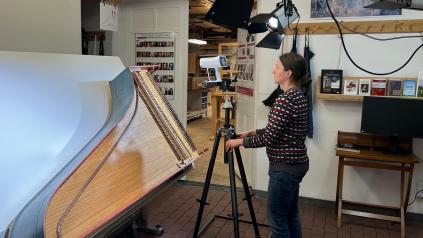
Results
After one year of this project's duration and numerous experimental setups and inquiries with the company Artec, we have reached the following results:
- We were able to develop a systematic scanning and post-processing procedure that allows us to reliably and accurately digitize complex artifacts such as grand pianos in a short time (on average under 2 hours) and to merge the captured data into a measurable 3D model (on average under 4 hours).
- We can reliably and efficiently create 3D models of these complex artifacts with measurement accuracy within the limits possible for the Artec LEO.
- The developed procedure is systematically structured and documented so that it can be conveyed to interested parties and is independent of personnel (after a short familiarization period).
- We were able to create measurable 3D models of the instrument structures of the original instruments stock and replicas of our institute with the aforementioned accuracy.
- We can use software tools to technically evaluate the 3D models of the instruments and perform reliable measurements on the digital model within the technically possible parameters.
- The 3D models can be compared with measurement data from the FARO arm (cross-check) and, if necessary, combined (supplemented).
- We can use software tools to compare the 3D models of the instruments with each other and investigate any deviations between different phases and/or replicas of the same instrument. This allows us to conduct a long-term study on physical changes to the instrument bodies due to environmental influences, string tension, etc.
Presentation Models
Additionally, we were able to
create aesthetically optimized presentation models of several grand
pianos for digital preservation and dissemination independent of
location and time.
3D model of the replica of Anton Walter grand based on measurement data with the Leo structured-light scanner
Measurements for comparison
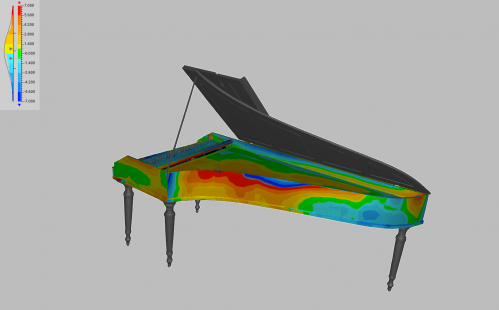
To investigate deformations of an instrument or differences between several replicas of the same instrument, two 3D models of two phases or replicas of an instrument—such as the two replicas of our fortepiano from the workshop of J. A. Stein—are overlaid. A distance map can be used to calculate and visually represent the deviations between the two models. In areas colored green, the two models match; in areas colored blue and red, however, deviations can be detected. The extent of the deviation increases with the color intensity. The different colors indicate the direction of the respective deviation.
In the case of the instrument presented here, it is evident that the replicas are matching the original in essential areas (green). In the areas showing deviations (red/blue), the age-related deformation of the original instrument becomes apparent.
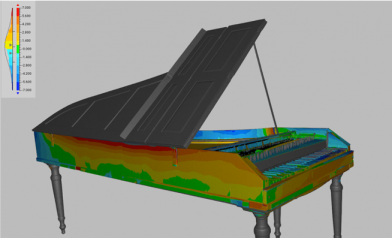
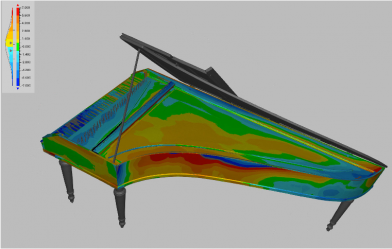
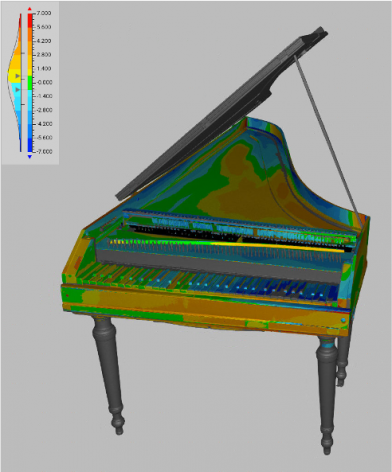
(AI-Translation 05-2025)



